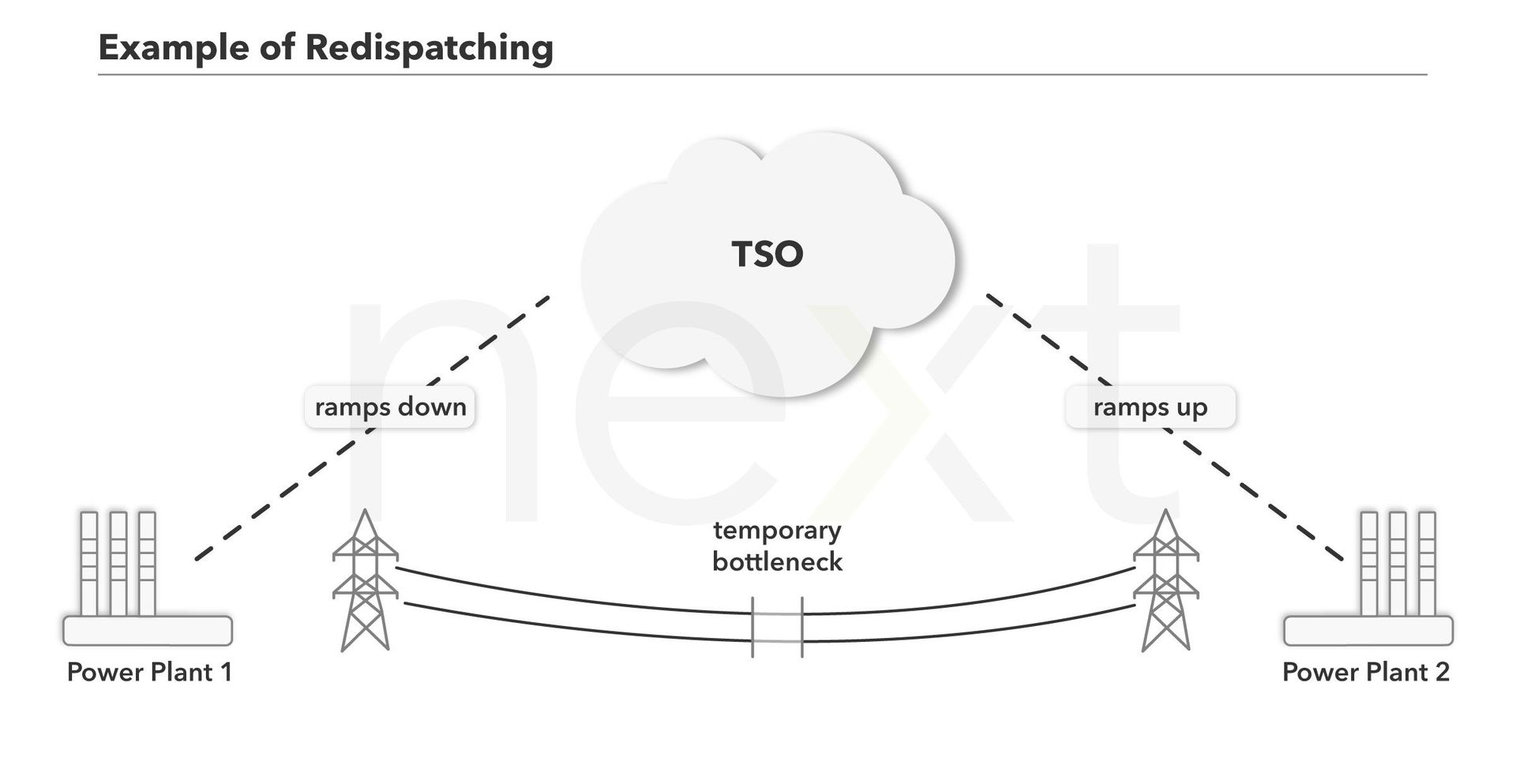What are Dispatch & Redispatch?
Definition
The term ‘dispatch’ refers to resource planning at a power plant by the plant’s operator. ’Redispatch’ refers to a short-term change in how a power plant is utilized. This request comes at the behest of a transmission system operator to prevent bottlenecks in the grid.
Table of Contents
Dispatch
Dispatch exists to achieve the most economically-lucrative operation schedule at a power plant. This calculation includes the variable costs of each plant (such as the cost of fuel at a coal-fired plant) along with anticipated prices on the energy markets. A power plant will only operate if its variable costs come in lower than the sales prices that can be secured. Dispatch creates a schedule that determines the allocation of available capacity for the plant or plants. Factors include location (which plant will be used?), time (how long will the plant be used, and from when?), and graduation (should the plant run at a partial or full load?).
Power plant operators are usually required to register their schedule with the respective transmission grid operator to enable forecasting of the grid’s available power.
Dispatch is also used in the field of renewable energies. Operators of fluctuating renewable energies, such as solar and wind power, evaluate weather forecasts and plant availability to determine the following day’s schedule. Controllable renewable energy operators create multiple-day schedules for their assets, which might include biomass and hydropower plants. This allows an operator to base resource allocation on prices from the energy exchange.
Redispatch
Redispatch is mainly used in regions with a high proportion of renewable power production, such as California or Germany. It is less common in other regions. To understand redispatch, consider how power plants submit their schedules to transmission system operators as previously outlined. As soon as the schedules haven been received, the grid operators conduct what is known as a load flow or grid load calculation to prepare an overview of the grid’s expected feed-in and consumption for the next day.
More to read
They analyze the dispatch to determine if any parts of the electricity grid might be negatively impacted, and to what degree. To keep the number of the next day’s short-term, grid-stabilizing interventions at a minimum, the transmission system operator can instruct plant operators to postpone schedule power production based on the next day’s load flow calculation to prevent grid bottlenecks. The request to shift electricity production is called a redispatch.
Disclaimer: Next Kraftwerke does not take any responsibility for the completeness, accuracy and actuality of the information provided. This article is for information purposes only and does not replace individual legal advice.



